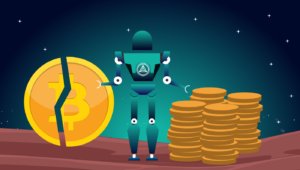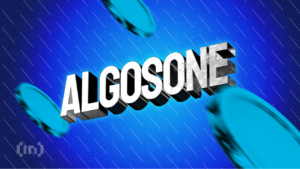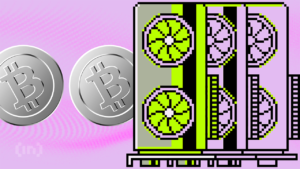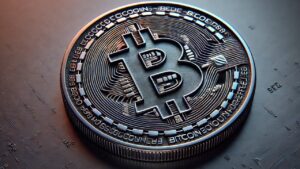Korea’s crypto market is among the strongest — and the strangest — in the world

[ad_1]

On a day in which Bitcoin crashed briefly to $30,000 in a rampant bear market, the leading cryptocurrency never got anywhere close to that on Korean exchanges. The so-called “kimchi premium” saw to that, keeping the price of Bitcoin as much as $5,000 above its level on leading U.S. exchanges.
The major reason for this kimchi premium is that Korea’s exchanges are fairly isolated by a combination of the country’s strict capital control laws preventing funds from leaving the country, and the tax code and anti-money laundering (AML) regulations that make it difficult for foreigners to use Korean exchanges — even giants like Bithumb and Upbit — without local Korean bank accounts.
Nor is that premium the only part of South Korea’s crypto industry that sets it apart from the rest of the world. Among other things, the market’s isolation combined with the extraordinary stability of the Korean won has kept stablecoin usage low and the embrace of decentralized finance, or DeFi, well behind that of the rest of the world.
Korea’s Bitcoin boom
Despite this isolation, Korea’s embrace of Bitcoin in particular and cryptocurrency in general is very strong. In April, more than five million unique cryptocurrency users — about 10% of the country’s population — reportedly bought or sold digital assets at least once since the beginning of 2021.
On May 19, the day the kimchi premium hit $5,000, just one Korean exchange, Upbit, had a 24-hour transaction volume of more than $31.5 billion, according to CoinMarketCap. Add in the rest of the country’s “big four” cryptocurrency exchanges, Bithumb, Korbit and Coinone, and it was $38.1 billion — substantially more than has been traded recently on the leading Korean stock exchange KRX.
One interesting aspect of Korea’s cryptocurrency craze is how broadly it is spread across age groups. One February survey showed that almost half of the users of leading Korean exchanges Bithumb and Upbit were in their 40s or 50s — many of them mothers. That said, a broader survey of Korean crypto exchange apps in March showed that young people dominate the ranks of new Korean crypto users, with those in their 20s and 30s accounting for nearly two-thirds of the new monthly app users in the first three months of the year. However, they are investing small amounts, often less than $100.
All that’s clearly having an impact. Bithumb Korea recently announced that its Q1 2021 net profit was up 876% compared with the previous year.
Government roadblocks
At the same time, the Korean government and regulators are far from being fans of cryptocurrency. In February, Bank of Korea Governor Lee Joo-yeol told a National Assembly committee hearing that “a crypto asset is an asset that has no intrinsic value.” He added that “it is difficult to understand why the price of Bitcoin is so high.”
Korea’s crypto regulations also make it difficult for foreign competitors. In December 2020, the world’s biggest exchange, Binance, shuttered its Binance Korea operation less than a year after it launched, thanks in large part to a law that banned exchanges operating in the country from sharing order books — meaning Binance Korea could no longer lean on Binance’s liquidity.
That law came into effect in March 2021, the same month that another leading cryptocurrency exchange — OKEx — announced it was shuttering its Korean operations due to the new AML regulations. It has also been suggested that these rules will make it difficult for smaller Korean exchanges to compete with the big four.
Not a fan of stablecoins?
Despite this booming crypto market, Korea is far behind the rest of the world in adoption of stablecoins, in no small part because the Korean won is stable enough that there isn’t as strong a need for stablecoins in the largely walled-off crypto market.
Beyond that, the Korean government frowns on stablecoins, according to Oleg Smagin, head of global marketing at Delio, a leading Korean crypto lending and staking firm. That makes exchanges leery of them, he adds.
In addition, exchange fees are low — largely in the 0.15% to 0.25% range at the big four. While the fees for withdrawals in won are flat and very low — about $1 — the fee for moving cryptocurrencies directly off can be steep. The big four’s withdrawal fees range from 0.0005 to 0.0015 BTC to withdraw Bitcoins directly — $20 to $60 for one BTC at $40,000.
Which could help explain why the Korean won is the fourth-most traded national currency for Bitcoin, behind only the Japan yen, the euro, and the dominant U.S. dollar.
The CeFi-DeFi hybrid
One victim of Korea’s closed-off crypto market and unfamiliarity with stablecoins is that the booming DeFi industry hasn’t had a chance to take hold there, Smagin says.
“2019 became a tipping point for the wide adoption of DeFi globally, but in Korea it was barely recognized, mostly because most of the local retail investors lacked experience using overseas crypto services and the adoption of stablecoins was low,” he says.
Delio’s solution is a hybrid centralized-decentralized finance model that uses CeFi as a way to build the initial crypto lending ecosystem that will become more and more decentralized over time. In the meantime, the firm realized there is an “enormous niche for a CeFi crypto-to-crypto lending service that can serve the needs of the local traders,” Smagin says.
The firm currently has four CeFi lending offerings, as well as a new payment service that lets Delio wallet holders pay with Bitcoin at a network of more than 70 retail firms services by payment app Money Tree. In addition, it’s Delio Liquidity arm provides institutional clients with digital asset loans of between $800,000 and $45 million.
Delio offers Bitcoin and Ethereum loans of up to 90% of the borrower’s BTC or ETH collateral, and also provides lending services to Bithumb customers, who can use either BTC or ETH, or Korean won, as collateral. Staking and yield farming are also available. Delio recently passed $2 billion in total value utilized.
Delio’s DeFi hybrid plans are centered around Ducato, a won-based stablecoin project scheduled to launch in the third quarter of 2021. The KRWD stablecoin — fixed at one won — will be generated by collateralizing cryptocurrency. Ducato is a DeFi protocol with its own token, DUCATO, which is used to pay fees and for governance. But the CeFi Delio platform provides the stablecoin with a user-friendly interface.
Disclaimer. Cointelegraph does not endorse any content or product on this page. While we aim at providing you all important information that we could obtain, readers should do their own research before taking any actions related to the company and carry full responsibility for their decisions, nor this article can be considered as an investment advice.
[ad_2]
Source link










